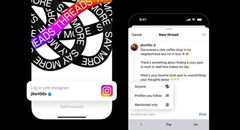The digital age poses challenges for all brands in every sector, and yet for the luxury market, the conundrum is a particularly tricky one.
That’s the opinion of Kantar Consulting associate director of brand, Laura Hurst, who said that for a long time, conventional wisdom was that the luxury goods sector was largely impervious to the ups and down of the economy. Recent results, however, suggest this is no longer true, with 29% of luxury retailers reporting a decline in sales in 2017.
Hurst suggests that using digital techniques to open up the market for luxury goods, and make them accessible to everyone, would appear to be a huge opportunity.
Experience, so far, suggests that brands which have embraced digital are reaping the rewards, so maybe the two aren’t incompatible after all.
Digital customer service shift
There has been a wholesale shift in people’s expectations of customer service in the digital era. Amazon, for example, speeded up delivery times by using big data analysis to predict what its customers will order next, shipping products to nearby delivery centres before they have even ordered them.
The only concern is that one of the traditional appeals of the luxury market has been its perceived ‘exclusivity’, with the very fact it is ‘hard to reach’ making it so much more satisfying when you do attain it.
So, should luxury brands embrace the ultimate democratisation and risk demystifying the category, or hold on to their ‘cloak of mystery’ and lose relevance by failing to keep up with the times? And if they do opt for democratisation, how will they balance the tension between this traditional world of exclusivity and the online world available to everyone?
Hurst believes the luxury sector can be no more immune to such trends than anyone else, pointing out that many luxury brands are embracing the online world to improve both consumer journey and brand experience, with almost 6 out of 10 luxury sales said to be ‘digitally influenced’.
Luxury shopping has become more effortless and easy for consumers in the era of e-commerce and more integrated customer experiences. Here are three examples of how the luxury and online world have connected seamlessly to open up new and exciting opportunities…
1. LVMH:
A world leader in luxury goods, LVMH launched 24 Sèvres, a global e-commerce platform and mobile application opening the doors of the world’s first department store, Le Bon Marché in Paris, online in more than 70 countries worldwide.
24 Sèvres prides itself on the ultimate customer service – fast shipping, easy returns, 24-hour availability, with bespoke add-ons including a personal shopper service.
2. Net-a-Porter:
Net-a-Porter showed how luxury services can be used to their maximum effect online with its ‘extremely important people’ programme, offering a bespoke shopping service to its biggest spending customers. It includes priority shopping, front-seat tickets for fashion shows, exclusive events and previews and a buying team on the lookout for items just for you.
Online shopping will always be at its heart an egalitarian experience, but luxury online retailers are increasingly going the extra mile to meet the expectations of their biggest spenders.
3. Farfetch:
The online fashion retail platform sells products from more than 500 boutiques and 1,500 designers around the world. Unlike Net-a-Porter, it doesn’t hold any stock, instead it provides the means to connect, peruse and buy from the latest brands and boutiques from around the world.
Conde Nast was an early investor and it recently raised more than £300m for expansion, the majority in China, one of the fastest growing luxury markets.
Experience-seeking millennials
Experience-seeking millennials are changing the rules of the game in the luxury market. As the above examples prove, luxury brands have come to realise that they need to find a way of removing the ‘cloak of mystery’ without sacrificing any of their brand appeal. In other words, they have accepted their brands and products need to be ‘desacralised’.
You can do this in any number of ways. Luxury jeweller Fred is using its Parisian stores to enable customers to personalise one of their iconic wristbands, Force 10, in 450m different ways. Hermes provides advice and exclusive content to its Hermes Career range through its Silk Knot mobile app, which now has around 50,000 downloads.
To stand out in a myriad of content, luxury brands have to go beyond storytelling to create involvement and a compelling consumer experience in which the customer takes charge. If they are to remain relevant in the digital age then luxury brands can no longer speak to the ‘happy few’.
A growing number of big players understand they should better engage a broader community on social media, to make their brand more accessible and vivid in the eyes of consumers. That is also the case with Kenzo, which has developed a playful theme in its Instagram content to make it more approachable and inclusive for consumers. By taking the brand off its pedestal for a moment, it creates a horizontal platform for customer interaction.
But Hurst says the challenge remains: how can luxury remain different from all other categories while using the same tools?
Two forces at play: Luxury and digital
The nature of the two forces at play here – the luxury industry and the digital era – means that the way they show up is largely the same, the world over.
The luxury industry, like every other, absolutely must embrace and evolve for the digital world that they and their consumers live in. But, like they’ve always done, can set themselves apart by doing it their own way.
It is important to appreciate that luxury has never only been about cost-based exclusivity, it’s also about the curation and craftsmanship of products and experiences that very few can access.
The digital world allows for rapid and exciting innovation of these, in ways that mass market brands likely can’t execute or afford.
With the luxury market still in its early stages in South Africa, digital may be the market expansion tool that the slower, more traditional sales and communication channels couldn’t offer.
In a world where growth is harder and harder to find, the luxury industry has the opportunity to unlock a new source of growth through this ‘democratisation’. With just one or two luxury hubs in South Africa, an e-commerce strategy that would, in other markets, remove a cloak of mystery may unlock significant opportunity in this country.


























